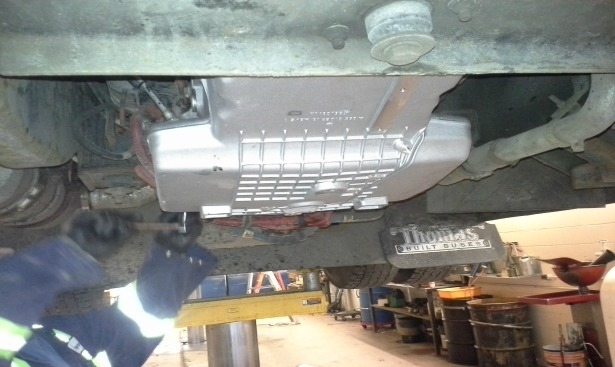A School Bus Fleet Over View
The fleet bus garage I have been employed at for going on 19 years started as just 2 bays in the sixties with 10 buses. This is the information I got from former employees. The other sections of the shop were added on as time went on to keep up with the expansion of the fleet.
At the back of yard is the body shop where our full time body man works. Adjoined to the body shop is the tire area. We have a full time tire man as well who also looks after washing the buses. As far as washing buses goes it would be perfect if the weather stayed around 10 degrees below zero during the winter to get away from the slushy mess / winter melt down. It’s a constant battle to stay ahead of the keeping buses clean.
Regular Shop Duties
My office is in the middle of the shop where I co-ordinate the daily duties. Every month we do shop safety inspections and hoist inspections. Our district has a health and safety officer who makes sure our working environment meets industry standards. That’s a good policy to have in a work place so nothing unexpected happens. Worksafe officers come around every so often to check out our operation.
The six Mechanics including myself look after 77 buses and the white fleet. There is also another shop 2 hours north with a small fleet to maintain. Fleet maintenance includes servicing every 5,000 kilometres, 6 month in house inspections and one year government inspections. The bus operators write down defects in their daily log books which get submitted to me and prioritized.
Keeping Proper Records
The paper trail has to be kept up since we are a provincially operated school bus fleet. Records of defects are filed and held on to for 5 years. Once a year the CVSE (commercial vehicle safety enforcement) officer inspects each unit in our fleet and does an annual audit of our records. Our operation has to meet the DOT commercial vehicle safety enforcement standards and stay above a certain percentage of failure to retain our internal inspection program.
Preparing For The Unexpected
The unexpected always happens and when you think you have the day planned out it changes with a break down or the day starts with one less mechanic. This is part of the routine and that’s why our fleet has spare buses to cope with mechanical problems. There is no way to predict trouble in the mechanical scheme of things. If it’s got tires you’re going to have trouble.
For anyone in the trade you know how failures can happen without warning…. so the best practice is to stay ahead of trouble with preventive maintenance. Regular servicing and inspections are invaluable…there is no money saved by letting machinery run until something goes wrong. The cost will be much higher.
Setting Up Campaigns
Setting a schedule and noting regular problematic occurrences helps set in place a campaign. This will allow you to change an OEM design flaw that has happened more than once. This is your indicator to do something about it before the failure turns into an epidemic.
With our fleet…. we purchase 6 to 8 buses per year and it’s funny how some things happen in threes timed close together within that group. A mechanical failure will occur on one bus and a week later the same problem will pop up on a sister bus. This has happened several times and it will definitely happen again.
That’s a quick description of the layout and what goes on in our bus garage. Thanks for reading this post. I would be interested to read something about your maintenance operation. Please comment below.







